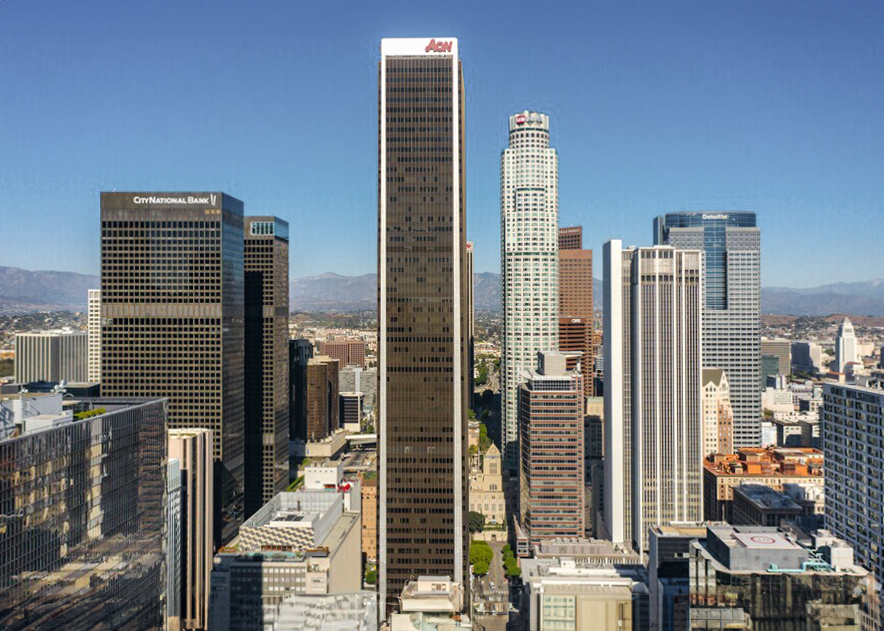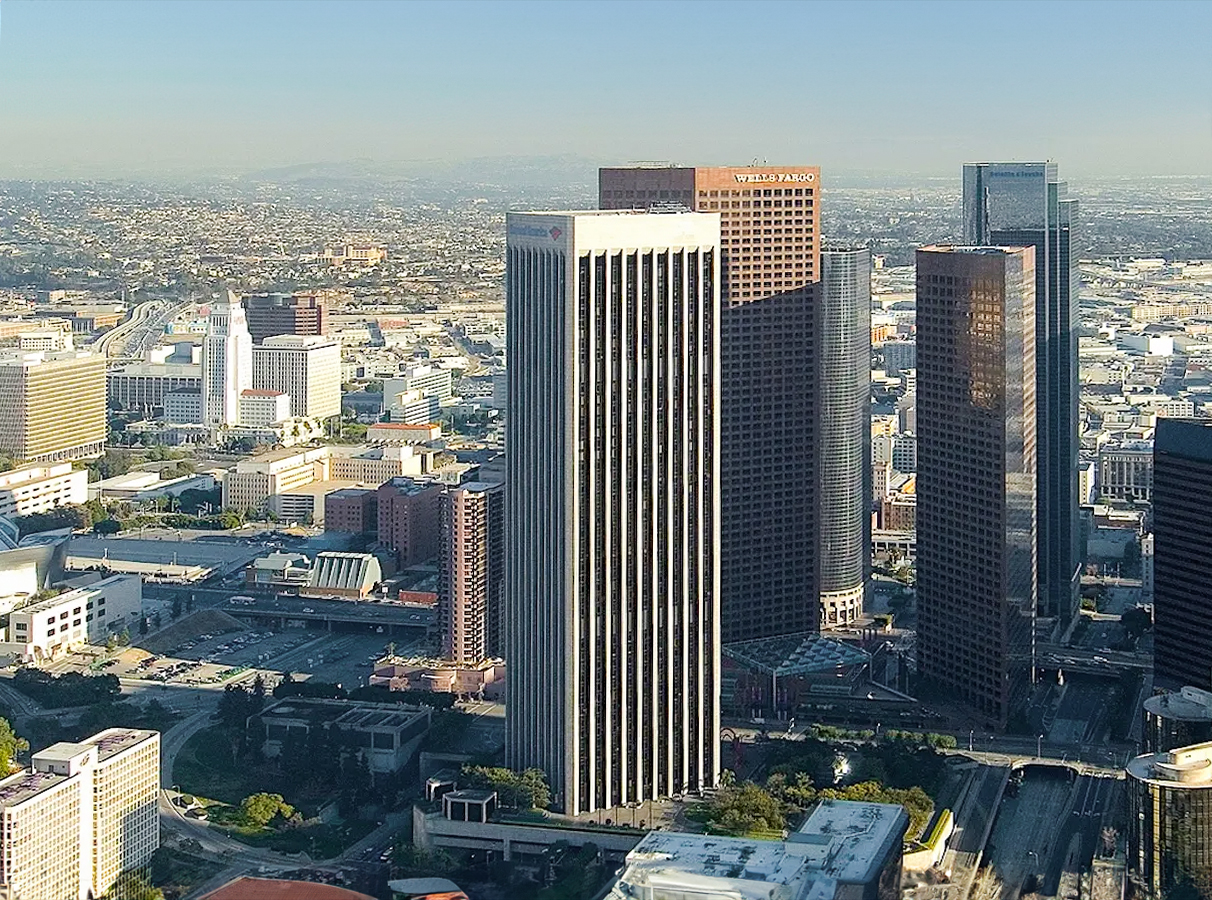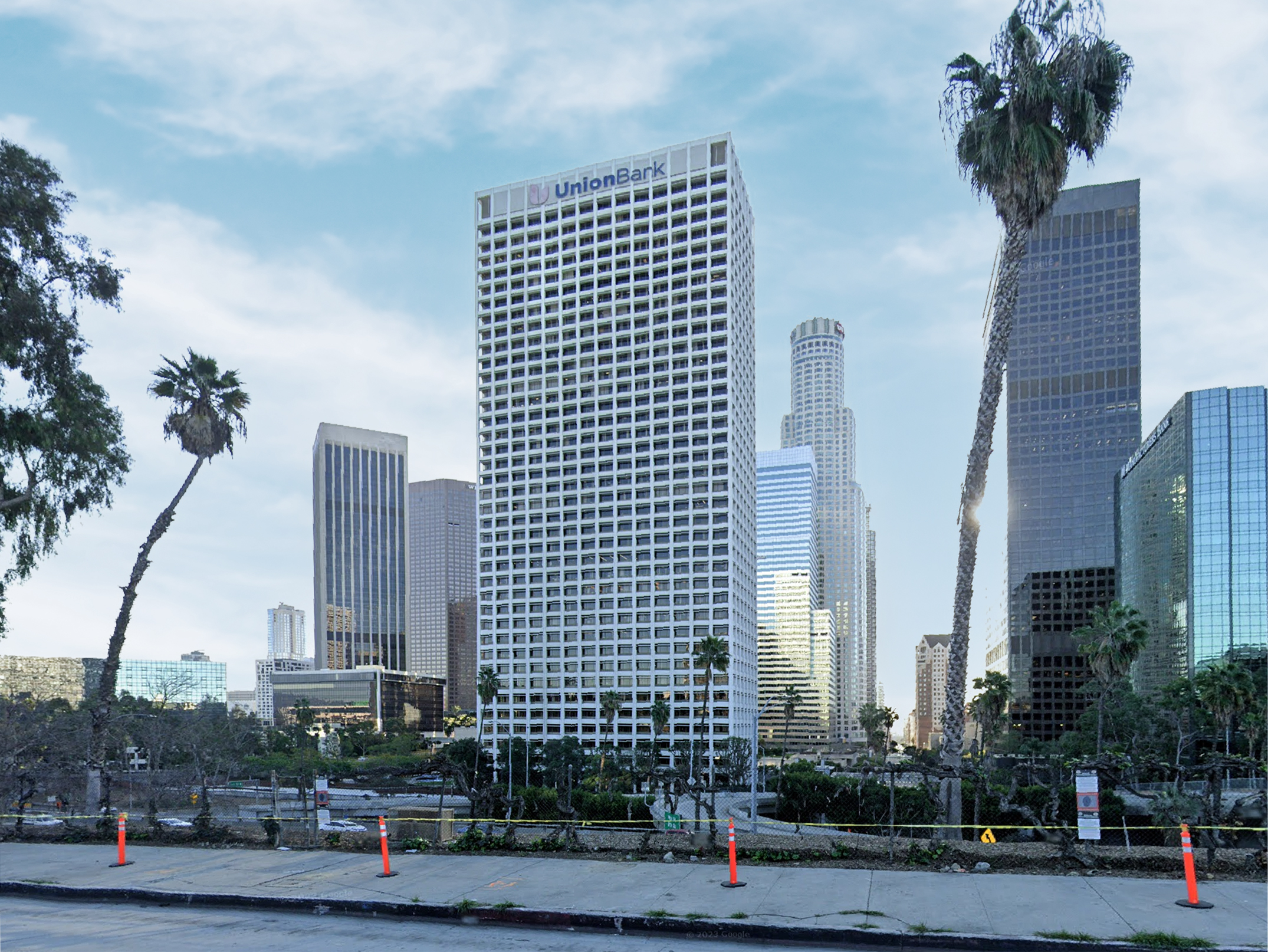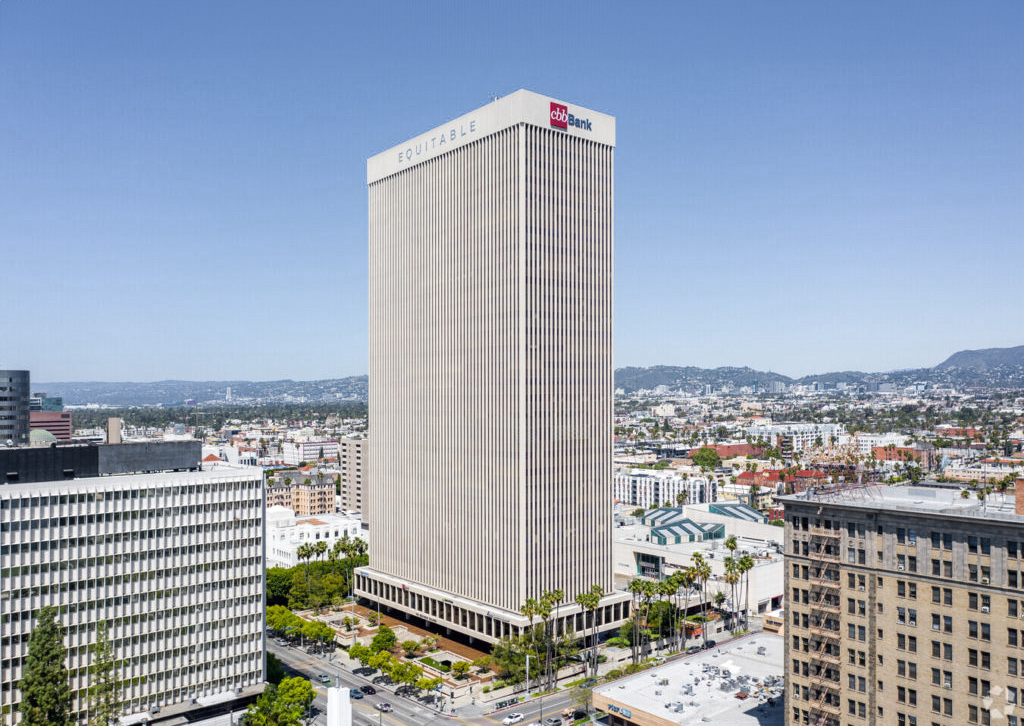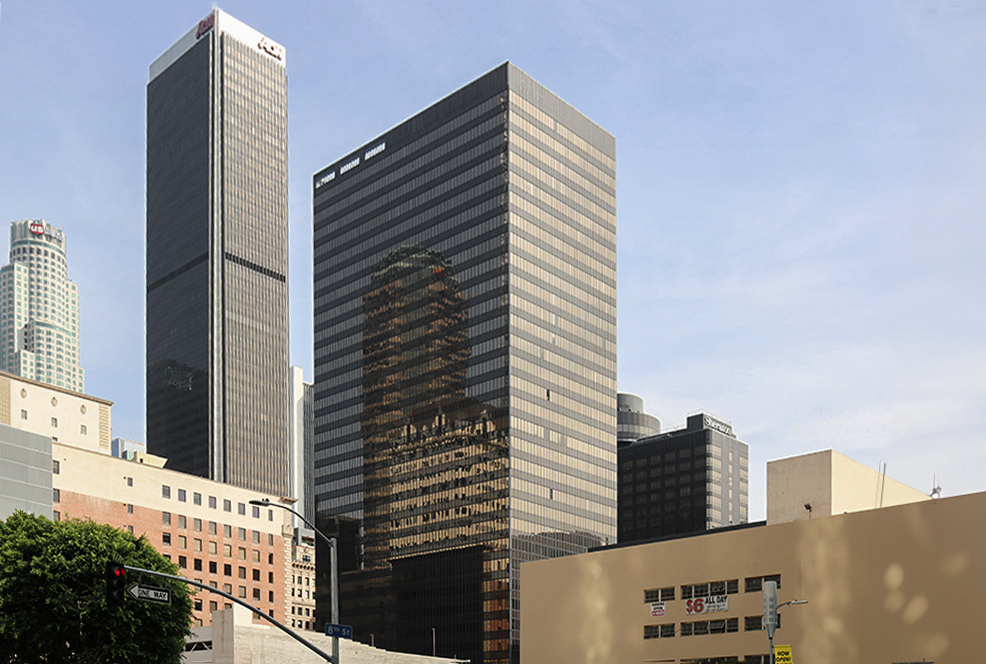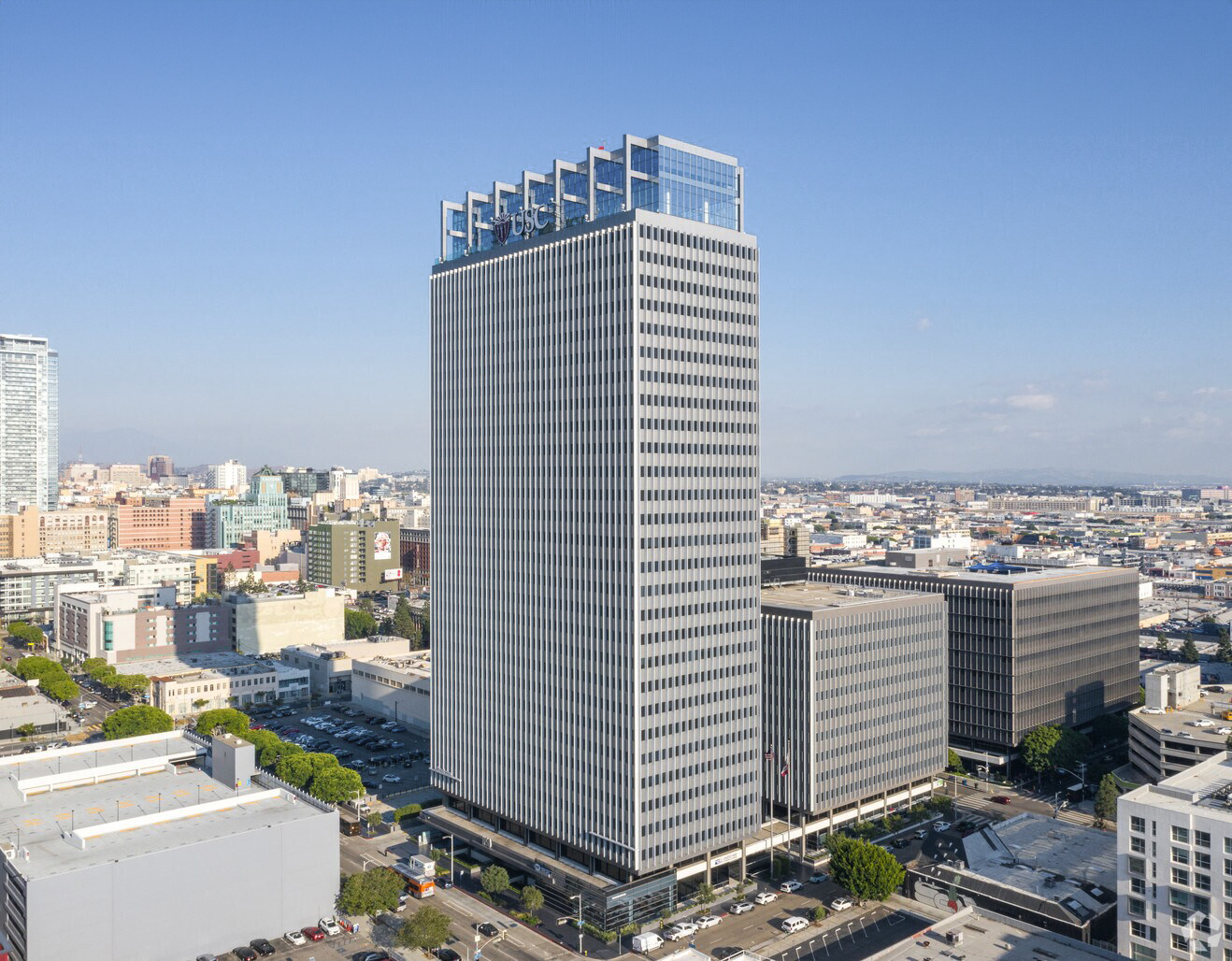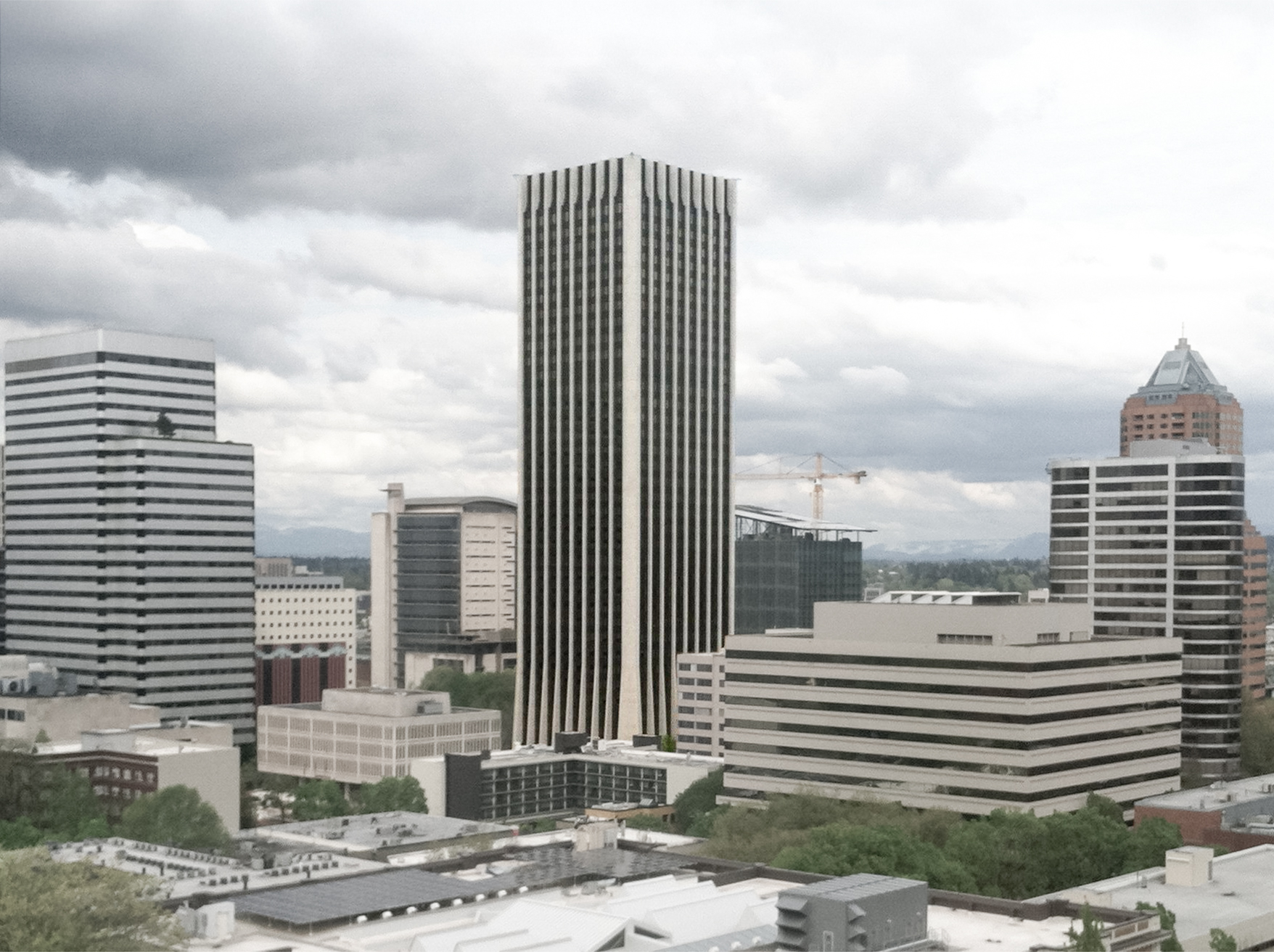The Aon Center is an International Style skyscraper designed by Charles Luckman, and built between 1970 and 1973 in Los Angeles, CA.
Aon Center is not the only name you might know this building by though. It is common for companies to want to attach their names to iconic buildings when they move in, or for the general public to come up with nicknames, and this one is no exception. The building has changed names several times over the years, and is also known as:
- United California Bank between 1973 and 1981.
- First Interstate Tower until 1981.
- First Interstate Bank until 1984.
Its precise street address is 707 Wilshire Blvd, Los Angeles, CA. You can also find it on the map here.
The building has two parking areas: one underground within the same building, and another located a few meters away connected to the building by a tunnel accessible to both vehicles and pedestrians, providing a total of 1028 parking spaces.
In 1988, while a springler system was being installed din the building, a fire started on the 12th floor. Security personnel ignored the alarms for 6 minutes, believing they must have been triggered by the installation works.
The building underwent a major restoration in 1992.
